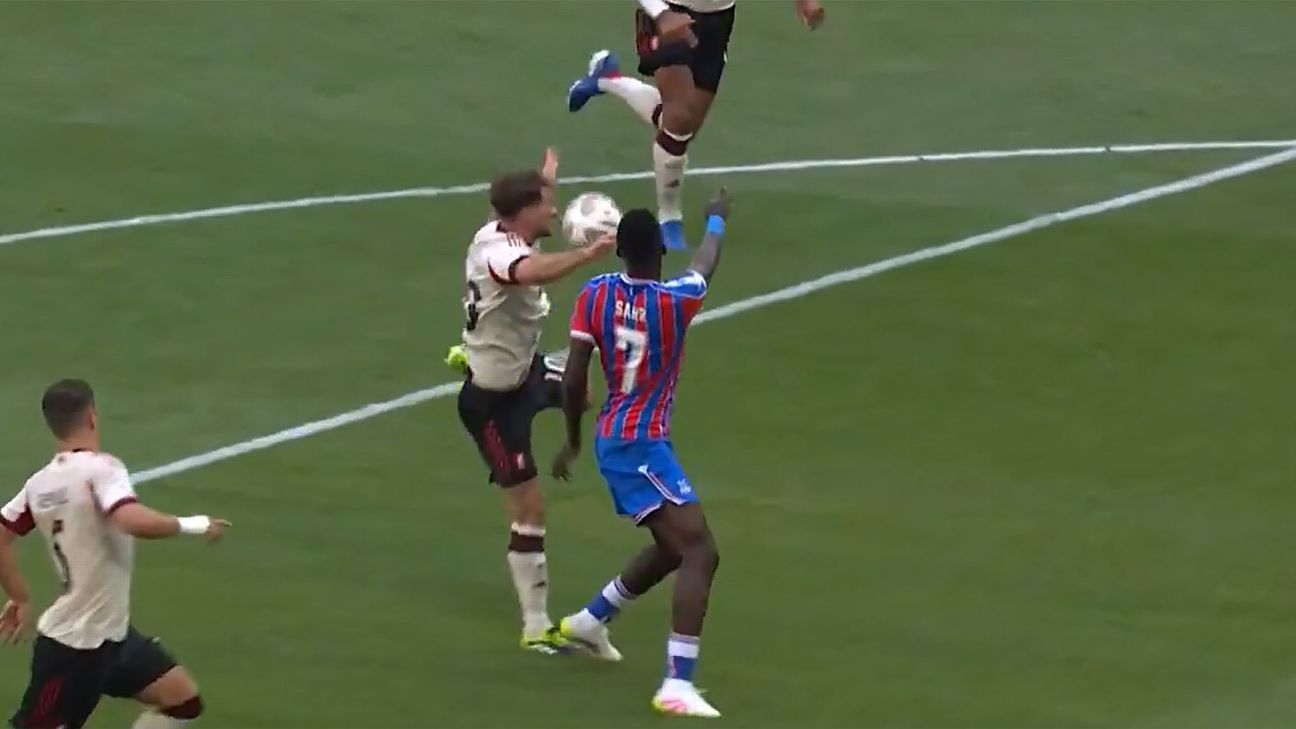Video Assistant Referee causes controversy every week in English football, but how are decisions made, and are they correct?
On Sunday, Crystal Palace and Liverpool met in the Community Shield at Wembley, and once again VAR was up for discussion.
The game finished 2-2, with Palace winning 3-2 on penalties.
Possible penalty: Handball by Mac Allister
What happened: The game was in the 79th minute when a cross was played into the Liverpool area. Alexis Mac Allister jumped to intercept, but he missed the ball and it hit his raised arm — preventing it from reaching Ismaïla Sarr. Referee Chris Kavanagh ignored claims for a penalty and it was checked by the VAR, Paul Tierney.
VAR decision: No penalty.
VAR review: The handball law has caused much controversy over recent seasons, but in England, it has been applied far more leniently. Last season in the Premier League, only nine spot kicks were awarded after the ball hit a player’s hand or arm. Across the other top European leagues, the Bundesliga (with fewer matches) had 16 and LaLiga, with the same number of games as the Premier League, had 28. Ligue 1 was the place to be for handball penalties, with 37 — one every 8.27 games, or basically once a week.
In England, the VAR got involved only if the player was facing the play, or the arm was fully extended away from the body, or it was a deliberate act. The ball striking the arm if it was just slightly away from the body, or clearly accidentally, was more likely to result in the arm being deemed in a natural position.
Far more importance has been put on a player’s body movement. For instance, if the player is jumping, he would be expected to have a raised arm.
If the ball had hit Mac Allister’s left arm in front of him as he was looking at the flight of the ball, it would have been a stronger claim for a penalty. As the ball hit his arm that was raised behind his body, more consideration is given to it being accidental.
There are many examples of this being applied last season, including two in one match between Nottingham Forest and Wolverhampton Wanderers.
Forest were on the attack in the 44th minute when Morgan Gibbs-White crossed to the far post to Chris Wood, but the ball touched the arm of Jørgen Strand Larsen. Because the ball dropped from behind him, it was ruled accidental.
A free kick was delivered into the Forest penalty area in the 75th minute. Craig Dawson was up for a set piece and being marked by Wood. As the ball dropped, it hit the arm of the Forest player, but again it was deemed Wood should not be penalized because the ball was dropping behind his back.
You could question whether there was any kind of deliberate act by Mac Allister. Did he raise his arm to make sure it was in the flight of the ball? Or was it the expected movement of the arm for his body position?
In England at least, no VAR intervention is consistent — but the penalty may well have stood had the referee had given it on the field.








